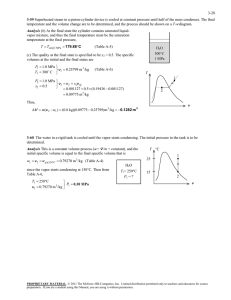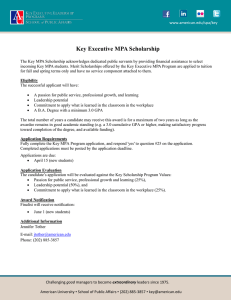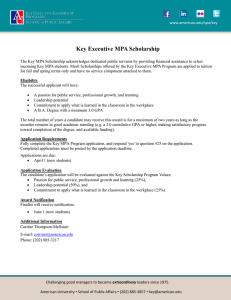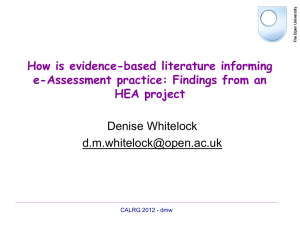Massachusetts Institute of Technology Department of Aeronautics and Astronautics Cambridge, MA 02139
advertisement
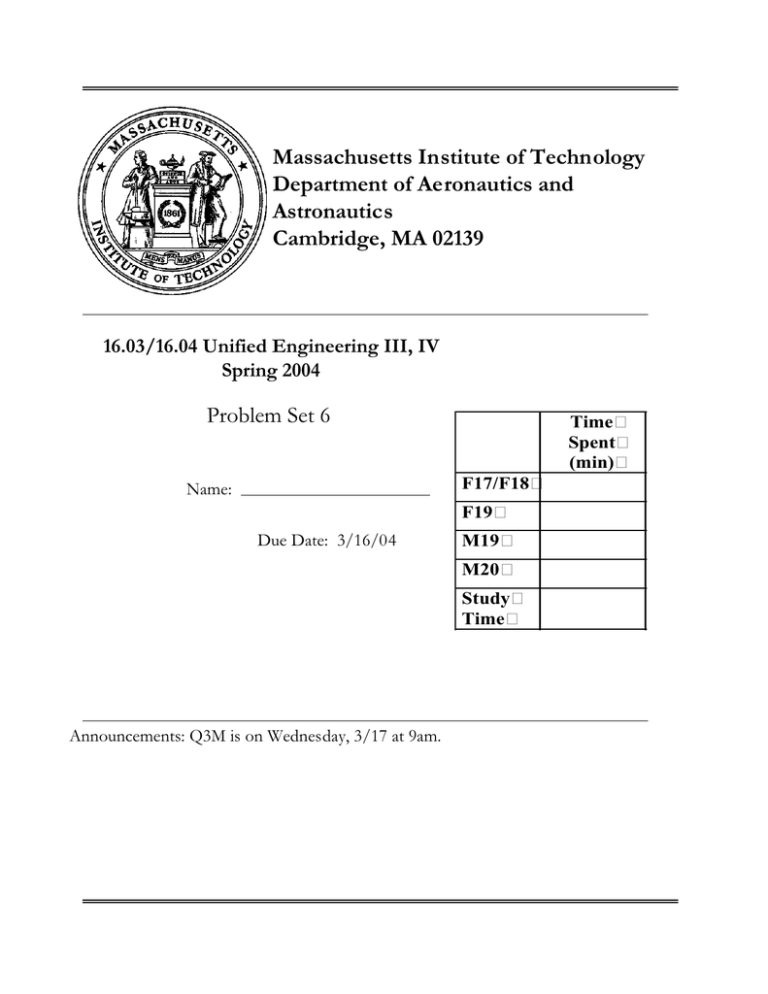
Massachusetts Institute of Technology Department of Aeronautics and Astronautics Cambridge, MA 02139 16.03/16.04 Unified Engineering III, IV Spring 2004 Problem Set 6 Time Spent (min) F17/F18 Name: F19 Due Date: 3/16/04 M19 M20 Study Time Announcements: Q3M is on Wednesday, 3/17 at 9am. Unified Engineering Fluids Problems F17–F19 Spring 2004 F17+F18. The airfoil shown is operating at M∞ = 1.6. Sketch the flow pattern. a) Determine the pressure pa on the front upper facet. Also obtain the surface Mach number Ma for part b). b) Determine the pressure on the rear upper facet. c) Using the surface pressures, determine the L , D , and corresponding c and cd . (Note: ρV 2 = γpM 2 ). p , M b a 10 10 c F19. The pressure-tank reservoir for a paint sprayer contains air at 50 psi (3.45 × 10 5 Pa), and T = 300 K◦. Air is to be supplied to the spray gun at a rate of 10 grams/s. What is the absolute minimum diameter of the air hose that’s required to supply this air? Problem M19 For wing spars bending loads are the major design driver. For engine disks the power density (and hence thrust) scales with the blade tip speed (V) squared. The centrifugal stress in a spinning disk is proportional to the density of the material used (r) and the tip speed squared, and to a good approximation this is given by: s ª 3 2 rV . Thus engines are designed to 8 develop as much thrust as the material strength will allow. . a) If wing spars and engine disks are to be designed to a criterion such that there is no permanent deformation at the limit stress (i.e. yield does not occur). Determine the material selection criterion for (i) wing spars and (ii) turbine disks. b) Rank the materials below according to their suitability for each application. c) Airframe structures typically operate at about 40% of the limit load during normal operations, which provides a margin for unexpected maneuver loads and gust loading. Engine disks regularly experience about 90% of their design limit load, as their loads are much more predictable due to the dominance of the centrifugal loading. Determine the critical crack size in your top ranked materials for each application under normal operating loads. d) Hence comment on the feasibility of using a damage tolerant design approach in each case. Material Density Kg/m3 Young's Modulus (GPa) Yield Stress (MPa) Al Alloy 2024 (T3) Al Alloy 7075 (T651) Ti Alloy Ti-6Al-4V Steel 17-7 PH (Stainless) Medium Carbon Steel 2800 2800 4510 8000 70 70 110 193 345 495 910 1435 Fracture Toughness MPa√m 44 24 50 77 7800 208 260 54 Problem M20 Al Alloy 2024 (T3) is used for the fuselage of a commercial transport. The mean stress during steady flight is predicted to be 150 MPa. In addition unsteady aerodynamic loading may result in a cyclic stresses of ±100 MPa in total amplitude at the same location. Assume that the unsteady loads are the main source of fatigue crack growth. Laboratory experiments show that the fatigue crack growth behavior is well modeled by an equation of the form: da 5.0 = 2.7 ¥10 -12 (DK ) dN where DK = YDs (pa ) In this geometry assume that Y=1.2. da/dN is given in m/cycle and DK is given in MPa√m If the smallest crack that can be reliably detected blade is 3.00 mm estimate the number of cycles until fast fracture occurs. Recommend an inspection interval accordingly. 2

